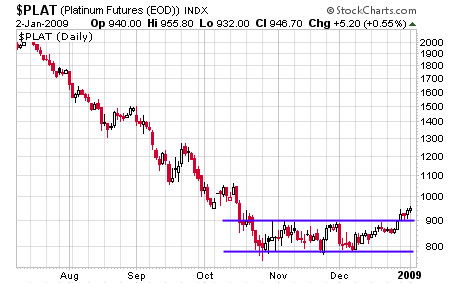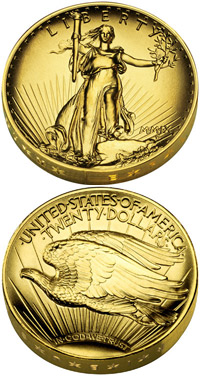 I haven’t had a round up in some time, so here’s one to bring us up to date with some of the most interesting gold, silver, and precious metals related stories found around the internet.
I haven’t had a round up in some time, so here’s one to bring us up to date with some of the most interesting gold, silver, and precious metals related stories found around the internet.
Rhodium: The Ultimate Reflationary Trade
After reaching a high of $10,010.00 per ounce, rhodium collapsed more than 90% to a low of $760 per ounce. As one of the rarest metals on the planet, is it time to buy?
Don’t Miss the Coming Gold Bull
A well written article, which gives an excellent outline of the bullish case for gold.
Biggest Gold ETF Holds Its Weight
Holdings of the SPDR Gold Shares exchange traded fund (GLD) held record levels of gold at the end of 2008, signaling firm underlying demand for gold.
A Nevada Town Escapes the Slump, Thanks to Gold
Quote from the story: “Times are good around here. People are happy.” When’s the last time you heard someone say that?
Is the Comex Doing Fractional Reserve Delivery of Gold?
A small precious metals fund reports that they were promised delivery of certain weights and serial numbered gold bars from the COMEX. The following day they were informed that they would instead be issued a “Warehouse Delivery Receipt” in place of the gold bars. Is something fishy going on?

 As trillions of dollars in equity values were vaporized this year, a strong November and December performance pushed gold into positive territory by year end. Gold’s annual gain was 4.32%. This marks gold’s eighth consecutive annual gain. The “lost decade” for stocks, has been quite the opposite for gold. Silver and platinum were less fortunate, posting losses of 26.90% and 41.31% respectively.
As trillions of dollars in equity values were vaporized this year, a strong November and December performance pushed gold into positive territory by year end. Gold’s annual gain was 4.32%. This marks gold’s eighth consecutive annual gain. The “lost decade” for stocks, has been quite the opposite for gold. Silver and platinum were less fortunate, posting losses of 26.90% and 41.31% respectively. In the past week, gold quietly marked two important milestones.
In the past week, gold quietly marked two important milestones.
 Red Alert: Gold Backwardation
Red Alert: Gold Backwardation With all of the positive articles on gold, one reliable way of getting attention is to publish an article forecasting an impending plunge in the price of gold. Two recently published articles caught my attention for their decidedly negative stances on gold.
With all of the positive articles on gold, one reliable way of getting attention is to publish an article forecasting an impending plunge in the price of gold. Two recently published articles caught my attention for their decidedly negative stances on gold. For much of the year, the United States Mint has been touting the upcoming recreation of what they have called the “nation’s most beautiful coin.” Augustus Saint Gaudens’ design for the
For much of the year, the United States Mint has been touting the upcoming recreation of what they have called the “nation’s most beautiful coin.” Augustus Saint Gaudens’ design for the